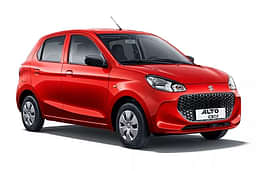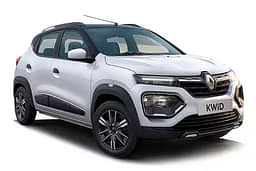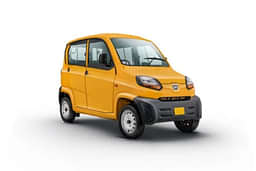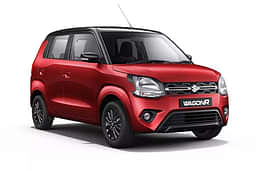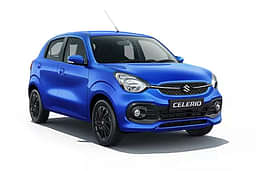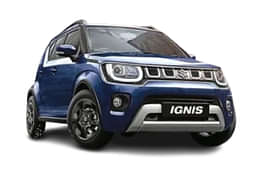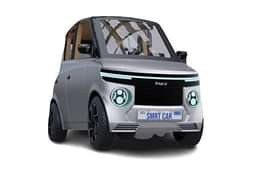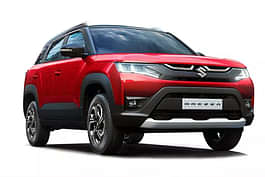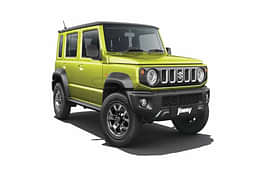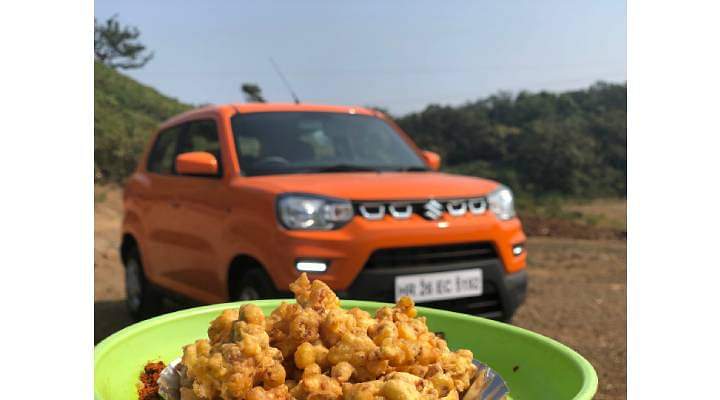
The Maruti S-Presso has been a success in India. It is selling well, registering more close to 5,000 units on a monthly basis since its launch in India. Why are people loving it? We decided to find out by living with it for a few days in the city of dreams, Mumbai!

Introduction
Why Mumbai for this little hatchback you may ask? Well, I was there for a short family vacay and decided to find out how the popular mini-SUV from Maruti's portfolio performs on the daily "trafficked" roads. Honestly, when the carmaker launched the car, I wasn't sure that it would take its rival, Renault Kwid off the track and end up in people's parking lots, those who were looking for an entry-level hatchback. And in the next para, you're going to know why it became popular!
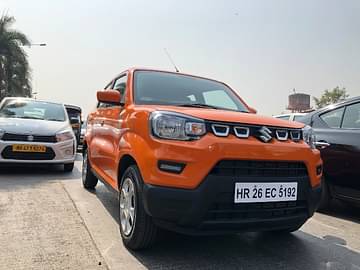
Exteriors
After landing at the swanky T2 Airport, I booked a cab towards Lower Parel, since that is where I had to pick the Maruti S-Presso. And just when I was about the reach, the driver sent me a picture of the mini-SUV which was gonna be my home for the next four days. And I can say there was a smile when I saw the bright orange shade of the S-Presso. This also happens to be the marketing shade that Maruti has been using in various forms of media ads.
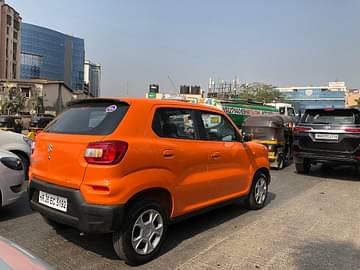
No, I am not a fan of loud colours but the car is definitely a crowd-puller in the Sizzling Orange shade. "No wonder the name sounds cheesy ;)". I say it because I could see people glancing at the car when I was zipping past them (Or was it because of the colour?). Starting off with my experience, I got my hands on the AMT version of the S-Presso and oh boy, was I pleased? Yes, because I was driving in Mumbai and I know the traffic worsens every passing second.

Interiors
On the inside, the S-Presso welcomes you with orange highlights on the dashboard and the centre console which takes inspiration from the MINI. Although it looks cool, there is also a practical advantage. It frees up space ahead of the steering, thereby aiding visibility, even for shorter passengers. I liked how the S-Presso continues to follow the simple design philosophy by Maruti with everything falling into hands perfectly well.

Modern Features
And there is the 7.0-inch touchscreen unit which gives you connectivity features like Apple CarPlay and Android Auto. The car doesn't provide you with the soft-touch plastics but the quality is good and sits right with its competitors. What caught my attention was that the placement of power window switches alongside the emergency button. This ends up freeing space on the door pads, thus giving you a sense of extra space.
Engine
Long story short, I started off my journey towards Kurla which was about an hour-long drive so I had enough time to test the car in peak hours of the traffic. The S-Presso packs a 1.0-litre, naturally aspirated three-cylinder petrol engine which churns out 67 bhp and 90 Nm of peak torque. And it is a peppy one. This is also due to the low weight of the car that ensures high power to weight ratio.
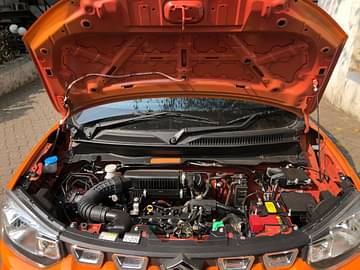
The initial acceleration puts a cheeky smile on your face when you press the throttle too hard. The engine is quick and picks up good from lower RPMs. Even with the AC on and two people seated at the back and decent luggage in the boot, it cruises happily. Although the same cannot be said for the NVH levels as at higher speeds as road and tyre noises filter into the cabin.
As I was moving towards my destination, I also realised that you sit pretty high in the car. And for a guy who's 5'10, that wasn't a problem at all. I liked the upright seating position which allowed me to have a good view of the road ahead. However, the spaciousness could not be well compared with the comforts the car had to offer. I say it because of the lack of under-thigh support. That brings me to the point where I reached the destination bearing the traffic of Mumbai.

My second day with the S-Presso was a drive to the hill station, Lonavala. Yes, and I was pretty excited about it since I had a chance to drive on the Mumbai-Pune expressway. I left Mumbai by around 10 in the morning after having a heavy breakfast and stopped at a fuel station at BKC to fill up the tank.
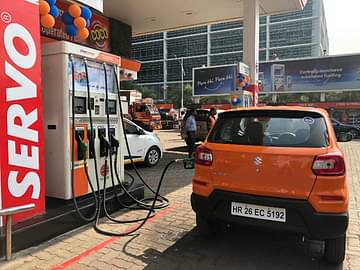
Fuel Economy
And did I tell you that the car is easier on your pocket too? Well, I picked up the S-Presso showing 12.9 km/l and I managed to get a whole lot of 17.4 km/l at the end of my trip.
After fueling up, we crossed the Mumbai traffic to check the dynamics of the car at the highway. And I found myself doing triple digit speeds without feeling any lack of confidence. Yes, the rumours that a small car will feel nervous when clocking high speed were all smashed. I really liked the steering response at city speeds though I must agree, for a tall hatchback, it still had enough feedback at higher speeds.
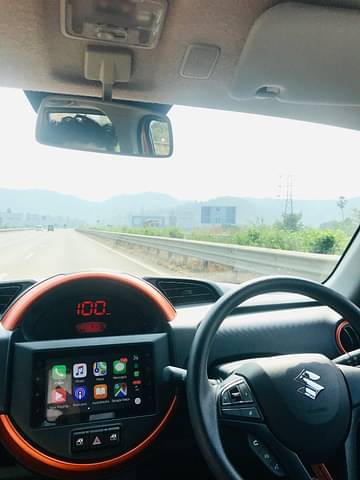
Then came the hills where I found a shortcoming of the Maruti S-Presso, which is the body roll. Now, it didn't feel as confident as the Renault Kwid while taking corners or when zipping the hills at high speed because of the high SUV stance. But I found it manageable in my experience. The brakes were responsive when I was moving to descend from the hills and that gave me a sheer amount of confidence.
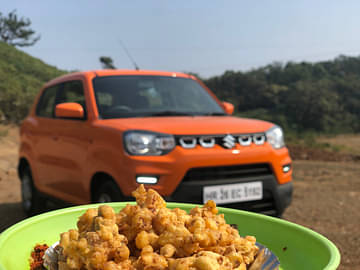
Comfort Level
Also, one thing about long journeys is that it makes you understand the comfort level of the car. Yes, to continue on that, the cabin is practical and feels airy. You get an ample amount of room so you don't feel claustrophobic but the under-thigh support for both front and rear seats is remarkably less. My mother found the back seat comfortable as it provided good support for the spine. But she hated the idea of roller windows, like seriously Maruti who does that now in today's era?
What I didn't like was that the sun visor is so short in length that even after adjusting towards my side, it couldn't stop the scorching sun rays. And it didn't have the ticket holder as to place the toll receipts. On the other hand, I liked the idea of cubby holes at the door pockets and at the front and rear of the car. Maruti has managed to pull out the spaces really well.
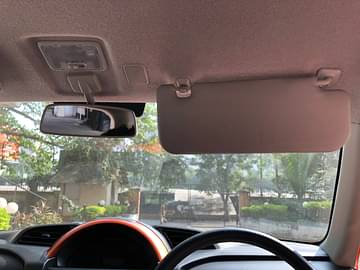
My third day went around exploring the famous points of Mumbai and I really liked the AC on how quickly it cooled down the cabin when it was 30 degrees outside. The car was easy to manoeuvre in traffic, thanks to its size and I took some pictures of it (like a fanboy). Although, I found adjusting the ORVMs a little difficult since we are so used to adjust the mirrors electrically nowadays. I ended the day with having Faluda Shake from Haji Ali Centre and sat at the Marine Drive just glancing at the sea and not the car, for a change!
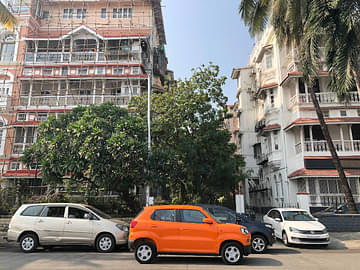
Before we parted ways, I made sure to have a quick glance at the speedo and to my surprise, I covered about 420 kilometres in just three and a half days. And with the a/c running, struggling in traffic, climbing the hills, the mileage turned out to be a pretty 17.3 km/l. I did mention this point above too, but isn't it the best part? This was the reason I had a smile on my face as I handed over the keys to the Maruti official and headed into the airport.
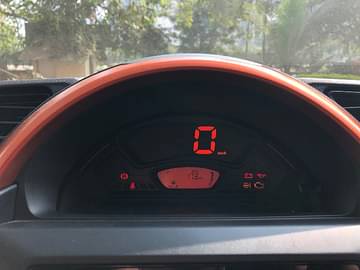
Prices
The BS6 version of the S-Presso is priced at Rs 3.71 lakh and goes up till Rs 5.14 lakh, ex-showroom, Delhi. It competes with the likes of Renault Kwid and Hyundai Santro.
| Models | Prices (ex-showroom, Delhi) |
| Maruti S-Presso | Rs 3.71 lakh - Rs 5.14 lakh |
| Renault Kwid | Rs 3.05 lakh - Rs 5.18 lakh |
| Hyundai Santro | Rs 4.58 lakh - Rs 6.26 lakh |

